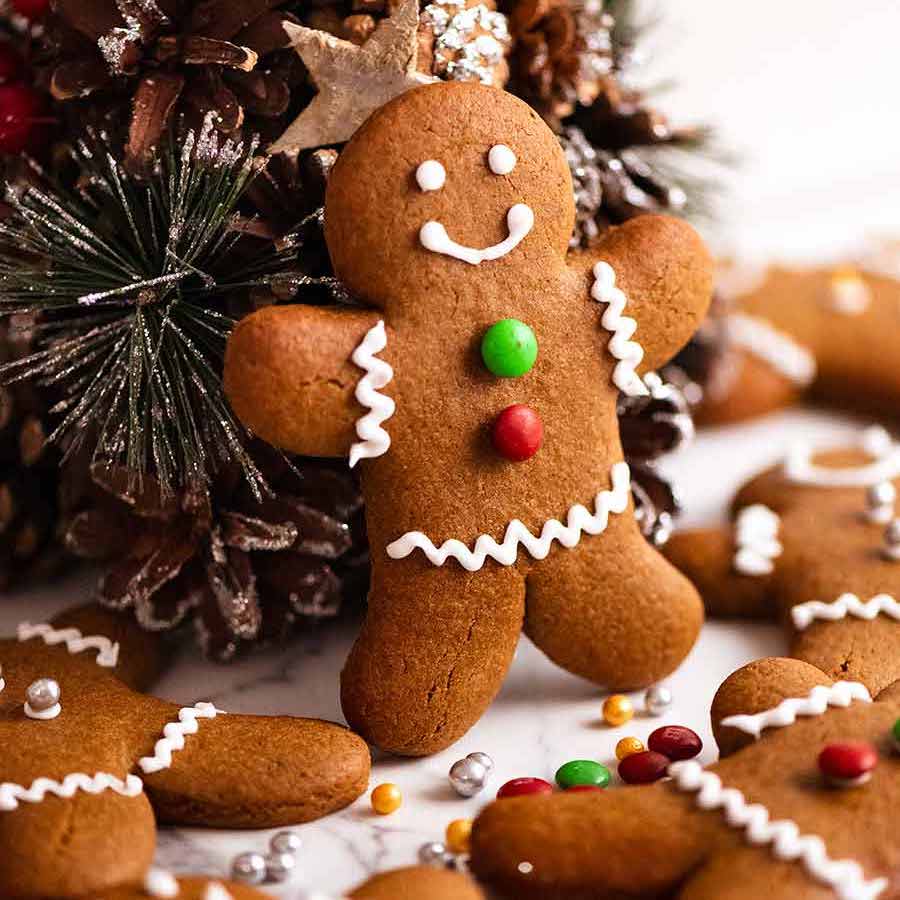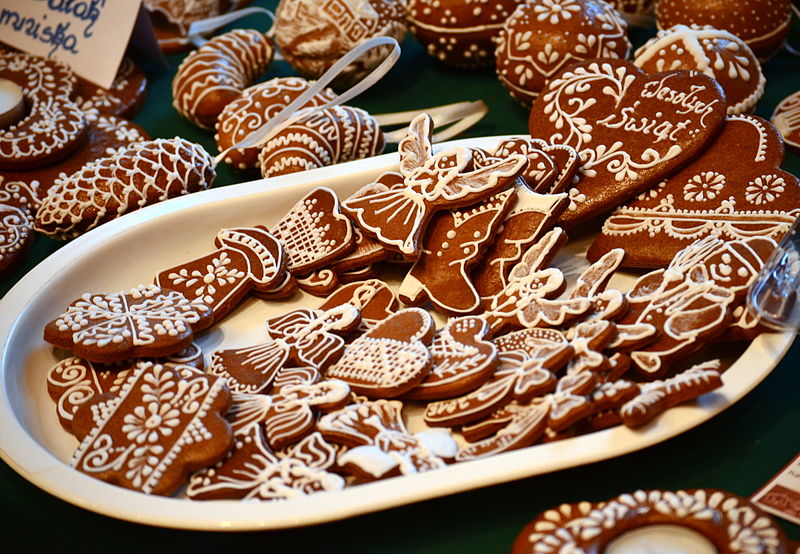The History & Recipe - Gingerbread

Gingerbread has a rich history that spans centuries, and it has evolved from a simple honey and ginger-flavored bread to a variety of sweet treats. Here's a brief overview:
- Ancient Origins: The use of ginger in food dates back over 4,000 years to ancient China and the Middle East. It was valued for both its flavor and medicinal properties.
- Medieval Europe: Gingerbread made its way to Europe in the Middle Ages, where it became associated with religious festivals, fairs, and celebrations. Monks are often credited with bringing ginger to Europe, and they began using it to flavor bread.
:max_bytes(150000):strip_icc()/230238-gingerbread-men-cookies-ddmfs-4x3-1-d291bf57fa9244d98238eac7df53f13d.jpg)
- Honey Cakes: The first gingerbread-like cookies were created by Medieval European cooks, who used a combination of breadcrumbs, honey, and spices. These early gingerbreads were more akin to a dense, spicy cake than the cookies we are familiar with today.
- Spices and Trade: During the 11th century, the Crusaders brought back spices from the Middle East, including ginger. This spice became more widely available in Europe, leading to an increase in the popularity of ginger-flavored foods.
:max_bytes(150000):strip_icc()/7322-favorite-old-fashioned-gingerbread-DDMFS-4x3-a15c0a20c8824c4cb4300989527f0d2f.jpg)
- Queen Elizabeth I and Gingerbread Men: In the 16th century, Queen Elizabeth I is credited with creating the first gingerbread men. She had them made to resemble important guests at court, and they were decorated accordingly.
- Nuremberg, Germany: Nuremberg, Germany, became famous for its gingerbread during the 16th century. The city's bakers developed their own recipes and techniques, and Nuremberg gingerbread, known as "Lebkuchen," became a delicacy.

- 19th Century: Gingerbread houses gained popularity in Germany after the publication of the Grimm Brothers' fairy tale "Hansel and Gretel," where the children find a house made of gingerbread in the woods.
- Colonial America: European colonists brought gingerbread recipes to America, where it became a popular treat. Molasses, a byproduct of the sugar refining process, was often used to sweeten gingerbread in the New World.
- 19th and 20th Centuries: Gingerbread continued to evolve, with new recipes and variations emerging. Gingerbread cookies, gingerbread cakes, and gingerbread houses became staples of holiday traditions in many cultures.

- Modern Times: Today, gingerbread remains a beloved holiday treat around the world. Gingerbread cookies are often cut into various shapes and decorated, while gingerbread houses are a popular holiday activity for families.
The history of gingerbread is diverse and reflects the cultural influences and trade routes that have shaped the culinary world over the centuries.

Homemade Gingerbread Recipe;
Ingredients:
- 2 1/4 cups all-purpose flour
- 2 teaspoons ground ginger
- 1 teaspoon ground cinnamon
- 1/2 teaspoon ground cloves
- 1/4 teaspoon salt
- 3/4 cup unsalted butter, softened
- 1 cup packed brown sugar
- 1 large egg
- 1/4 cup molasses
- 1 teaspoon vanilla extract
- Optional: Icing and decorations for decorating
Instructions:
- Preheat the Oven:
Preheat your oven to 350°F (180°C). Line baking sheets with parchment paper.
- Dry Ingredients:
In a medium bowl, whisk together the flour, ginger, cinnamon, cloves, and salt. Set aside.
- Cream Butter and Sugar:
In a large mixing bowl, cream together the softened butter and brown sugar until light and fluffy.
- Add Wet Ingredients:
Beat in the egg, molasses, and vanilla extract until well combined.
- Combine Dry and Wet Ingredients:
Gradually add the dry ingredients to the wet ingredients, mixing until the dough comes together.
- Chill the Dough:
Divide the dough in half and shape each half into a disk. Wrap them in plastic wrap and chill in the refrigerator for at least 1 hour. Chilled dough is easier to roll and cut.
- Roll and Cut:
On a lightly floured surface, roll out the dough to about 1/4-inch thickness. Use cookie cutters to cut out desired shapes.
- Bake:
Place the cut-out cookies on the prepared baking sheets. Bake in the preheated oven for 8-10 minutes, or until the edges are just starting to brown. Be careful not to overbake for a softer cookie.
- Cool:
Allow the cookies to cool on the baking sheets for a few minutes before transferring them to a wire rack to cool completely.
- Decorate (Optional):
Once the cookies are completely cooled, you can decorate them with icing, sprinkles, or other decorations.
Enjoy your homemade gingerbread cookies! They're perfect for holiday parties, gifts, or simply enjoying with a cup of tea or coffee.
Gingerbread recipe videos;
Old Fashioned Gingerbread Recipe;
Classic Gingerbread Cookies Recipe;
Easy & Festive Gingerbread Cookies Recipe;
References;
- The Oxford Companion to Sugar and Sweets. Oxford University Press. 1 April 2015. ISBN 978-0-19-931362-4.
- "Pardubický perník prý dovede probouzet lásku". Novinky.cz. 2010-04-14. Retrieved 2020-12-20.
- Wilson, Tolford (1957). "Amelia Simmons Fills a Need: American Cookery, 1796". The William and Mary Quarterly. 14 (1): 16–30. doi:10.2307/1917369. JSTOR 1917369.
- A Dictionary of Miracles: Imitative, Realistic and Dogmatic" by Ebenezer Cobham Brewer
- Fiegl, Amanda. "A Brief History of Gingerbread". Smithsonian Magazine. Retrieved 2020-12-20.
- Anderson, L. V. (24 December 2013). "Why Do We Shape Gingerbread Cookies Like People?". Browbeat (blog). Slate. Retrieved 24 December 2013.
- "What is the history of gingerbread?"
- "History of Gingerbread – Confectionary Chalet". Retrieved 2022-03-10.
Thank you for sharing your time!
You can complete great comment tasks at here. #gingerbread #cake #cookie #gingerbreadman #ginger #dessert #bakery #cuisines #foodinspiration #food #chefs








































